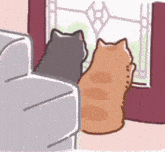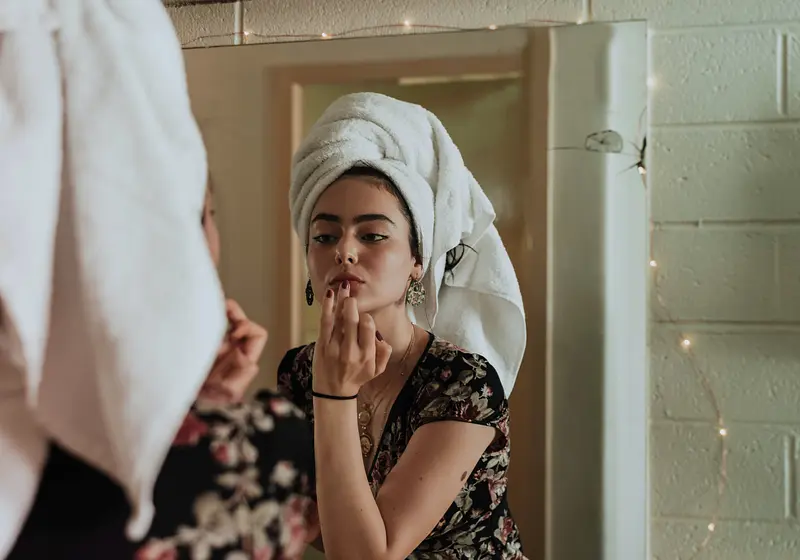People express and celebrate their cultural identities by using beauty trends that are rooted in particular cultures. The distinctive beliefs, customs, and aesthetics of each town are frequently reflected in these movements, producing a sense of legacy and pride.
The practices, aesthetics, and fashions associated with beauty and appearance that originate from certain cultures or communities are referred to as cultural beauty trends. These trends are impacted by a specific culture's historical, social, and cultural circumstances and are frequently based on its distinctive values, beliefs, and traditions.
The ‘stealing’ of such a source of impact and self-expression is harmful to all spheres of society as it can lead to loss of self-identity and a sense of belonging as a result. The intergenerational transmission of cultural knowledge and practices can be disrupted when cultural aspects are removed from their original setting, which can impair the community's sense of cultural autonomy.
Therefore, it is safe to say that cultural beauty trends usually mask a veiled type of appropriation, since they frequently take elements from marginalised cultures and assimilate them without sufficient understanding, respect, or acknowledgment.
Let us slide into your dms 🥰
Get notified of top trending articles like this one every week! (we won't spam you)Instances of Appropriation of Cultural Beauty Trends
1. Bindis
Bindis are ubiquitous in modern India in the sense of them being a daily wear product for older women and one worn on certain occasions for younger ones, even in metropolitan cities, which are considered to be highly eurocentric. The bindi holds great importance for Hindus as it is believed to be situated at a crucial nerve centre, associated with the ajna (third eye) chakra. This chakra is considered the seat of intuitive knowledge.
Within Hinduism, the bindi is seen as a vessel for this spiritual energy, promoting focus and concentration. Needless to say, bindis are a source of great symbolism in Indian culture and society, making it extremely disrespectful of artists and attendants of music festivals alike to use them as ‘exotic’ accessories to dress up their foreheads without even understanding what they signify or mean. This is an example of appropriation of a cultural beauty trend; the bindi is the cultural beauty trend that is being appropriated by Western cultures for frivolous reasons, without giving credit to the ethnic culture.

via Pavan Gupta, Unsplash
2. Cornrows or Braids
‘If our hair could talk, it would tell a story of power. There is no bad texture. Our coils hold the DNA of survivors.’

via Ben Iwara, Unsplash
African culture is widely known for its hair styling techniques. Little is known, however, about the reasons and importance of these braids. Rice, gold and seeds were often braided in between two sections of hair so that if captured by their white oppressors, the detainees would at least have some sustenance for the voyage across the Atlantic.The same was done in order to flee these oppressors.
Apart from being a hope for survival, hair is also a matter of pride and self-care, wherein common household items like butter and bacon grease were used to moisturise and style hair on the one day when women were allowed to let go of their headwraps: Sunday, or the day when everyone went to Church. This little time allotted to themselves allowed women to feel ‘human’ again. Hence, it is profoundly inappropriate and lacking in respect for celebrities like Miley Cyrus, Lady Gaga and the Kardashians to regard these cultural practices as fleeting fashion trends that can be adopted one day on the red carpet and discarded the next, considering their historical significance as essential elements for the survival of African and African-American communities. Adding salt to the wound, white celebrities are praised and glorified for this, when African-Americans are actually fired from workplaces for looking ‘ghetto’ or unprofessional with their braids.
3. The Kimono
A garment constructed of eight rectangular pieces of silk, the kimono was first used as an undergarment worn by both men and women in the Heian period. A simple, straight-cut textile, it was later transformed into a symbol of cultural identity, tradition and social rank, especially the latter, in the Edo period(1603-1868).
Highly-detailed, vibrant kimonos made of fine silk were the mark of a noble person or a higher-ranked person, whereas the lower classes were limited to lacklustre colours, cheaper silk and modest kimonos. Nevertheless, today, the kimono represents Japan as a whole, uniting the country on events like New Year’s Day or Coming of Age day, when most people choose to wear one, rich or poor.

via Perry Merrity II, Unsplash
This garment, so rooted in history, adapts to modern contexts through contemporary variations and fashion, blending tradition with modern aesthetics and bridging the past and present, allowing for multiple generations to make it their own. Japanese nationals say that though it is quite a rarity to see a kimono in daily life now, whenever one sees a person wearing one, it evokes a sense of pride, respect and nationalism in the attired and the viewer alike. It is even said to make one stand taller!
However, the Western approach towards the kimono demonstrates a lack of consideration for these sentiments, often choosing to exoticize or fetishize it. This leads to the perpetuation of stereotypes and the reduction of kimonos to mere fashion accessories, as seen in movies like Memoirs of a Geisha (2005), Wolverine (2013), and Kill Bill: Volume 1 (2003). Adding insult to injury, in 2019, Kim Kardashian launched a line of shapewear called 'Kimono', sparking immediate outrage from numerous kimono designers and wearers.
This prompted the initiation of a petition on change.org, which amassed over 11,000 signatures. The hashtag #KimOhNo circulated on Twitter, and following a public apology from Kim Kardashian herself, she renamed her brand 'Skims', a name it has been known by ever since.
4. Mehendi
Going to the bazaar in South-Asia, one will probably find henna artists on the streets on any given day, especially days of fest, where women flood the markets to have their hands and feet adorned with henna. It is used to signify days of joy like weddings, Diwali, and Eid, as the application of mehendi is considered auspicious and is believed to bring good luck, blessings, and protection against evil. Dating back to ancient Egypt, the practice is deeply ingrained in the social and cultural fabric of South Asian countries like India, Pakistan and Bangladesh and the patterns are highly specific and designed according to the regions and communities where they are curated and whom they are designed for.
A huge contributor at weddings, geometrics, florals, ‘palkis’, names and dates are prevalent in bridal mehendi, which takes hours to be applied, and simpler, less intricate designs adorn the limbs of the wedding guests. Moreover, henna art is a great industry that provides employment for thousands of artists every day in South Asia and is sometimes their sole source of income.
Over the years, mehendi has undergone a transformation, giving rise to diverse contemporary styles and techniques. Presently, one can come across modern mehendi designs that incorporate Western elements, glitter, and even gemstones, bringing a new twist to the art form. However, the global popularity of henna art has unfortunately led to instances of cultural appropriation.
Certain designs, deeply symbolic in South Asian culture, are applied without an understanding of their significance, solely for their aesthetic appeal. Consequently, the intricate patterns that have existed for centuries are reduced to fleeting fashion trends, often without acknowledging the community responsible for their creation.

via Unsplash
5. ‘Brownie glazed’ lips
A recent scandal involving the defamed Hailey Beiber and a decades-old lip duo, the brownie glazed lip, may be the epitome of appropriation of cultural beauty trends as it was put under the microscope of social media immediately but to little consequence. The brown-liner-clear-gloss combination Bieber was pushing as an autumn trend to market her beauty line Rhode, with the implication she masterminded it, was in fact a combo that women of colour had been using for decades, and had been being bullied for it! Aishwarya Rai, Salma Hayek and Lauryn Hill are a few names that have been seen on red carpets wearing the exact lips years before Hailey Bieber posted it on Tik Tok, garnering 14 million views.
Although it can be argued that Hailey Bieber herself is of Latina heritage and therefore has a personal connection to the lip combo, it is worth noting that this movement was initially associated with black and brown women, who spearheaded it in the film and music industries. This movement emerged at a time when white women dominated the silver screens. Consequently, the representation and inclusion of women of colour in the makeup industry was relatively limited, leading them to have to work with what they had. This being copy-pasted on an influential, white celebrity amassed thousands of compliments, but the same look put on a woman of colour who works in a law firm is weird or ‘ghetto’. This instance especially highlighted that sharing cultural trends must distinguish between appropriation and appreciation.
The phenomenon of adopting cultural beauty trends is a nuanced and intricate matter, encompassing various outcomes that can be both advantageous and detrimental. Cultural exchange and admiration have the potential to cultivate comprehension and enhance diversity, ultimately contributing to a more inclusive society. Nevertheless, it is essential to recognize and address the negative repercussions, including exploitation, erasure, and the perpetuation of beauty standards.
To navigate cultural beauty trends conscientiously, it is crucial to approach them with respect, knowledge, and sensitivity, acknowledging their origins, significance, and the underlying power dynamics at play. By embracing cultural diversity in a manner that avoids appropriation or commodification, we can truly celebrate beauty in all its manifestations while fostering inclusivity and cultural harmony.






.jpg)
.jpg)







